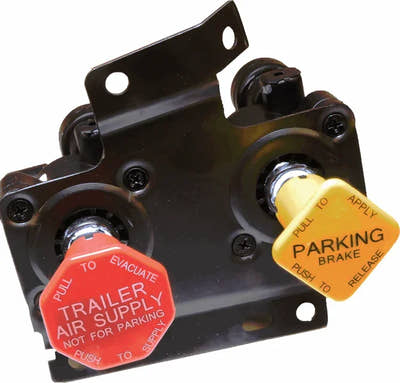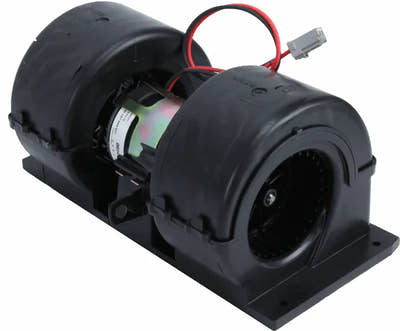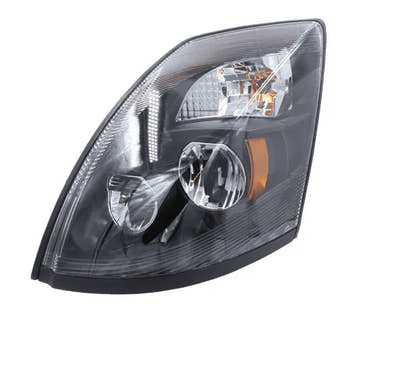Semi Truck Clutch Failure FAQs
What happens when clutch goes out on semi truck?
If you drive a semi truck, you know that the clutch is an important component of the vehicle. It is responsible for engaging and disengaging the engine from the transmission, allowing the driver to change gears and control the movement of the truck. When the clutch goes out, it can be a major problem that may leave the truck unable to move after it comes to a full stop.
One of the first things you will notice if the clutch goes out on your semi truck is that it becomes difficult or impossible to change gears. This is because the clutch is responsible for connecting and disconnecting the engine from the transmission, and without it, the gears will not be able to engage. However, the truck can be driven normally until you come to a stop, considering you don't use the clutch while the truck is already moving usually.
Eventually, however, the truck will need to come to a stop, and when it does, the clutch will no longer be able to function at all. If the hydraulic system or something else major does not work, it will be impossible to get the truck back into gear without shutting it off and starting it again while in 1st gear. This is extremely dangerous, as the truck will jolt forward suddenly when it is started, potentially causing accidents or injuries. WE DO NOT RECOMMEND ANYONE TO DO THIS.
If your semi truck's clutch goes out, it is important to find a safe place to stop and exit the vehicle. The truck will need to be transported to a repair facility using a tow truck or other means, and it will be unable to move until the clutch is repaired or replaced. It is essential to follow safety precautions and be aware of your surroundings in this situation to avoid any accidents or injuries.
What are the signs of clutch failure or a blown clutch?
-
Slipping clutch: If you notice that the engine revs up but the truck does not seem to be accelerating as it should, it could be a sign that the clutch is slipping. This could also cause the truck to lose power or stall.
-
Burning smell: If you smell a burning smell coming from the clutch area, it could be a sign of overheating or wear and tear on the clutch.
-
Soft or spongy clutch pedal: If the clutch pedal feels soft or spongy when you press on it, it could be a sign of a problem with the hydraulic system or the clutch itself.
-
Grinding or noise when engaging gears using the clutch: If you hear grinding or other unusual noises when shifting gears, it could be a sign of clutch wear or damage.
How often should a semi clutch be adjusted?
The frequency with which a semi truck's clutch should be adjusted will depend on a number of factors, including the age and condition of the clutch, the type of driving that the truck does, and the manufacturer's recommendations. In general, it is recommended to have the clutch checked and adjusted regularly as part of a truck's routine maintenance.
If you drive your semi truck in a way that is particularly hard on the clutch, such as in stop-and-go traffic or in hilly or mountainous terrain, you may need to have the clutch adjusted more frequently. On the other hand, if you drive mostly on flat roads and at a consistent speed, your clutch may not need as much maintenance.
It is generally recommended to have the clutch adjusted every 50,000 to 100,000 miles, or at least once a year if you drive your truck less frequently. However, it is important to consult your owner's manual or a mechanic for specific recommendations for your particular truck.
Remember, taking care of your semi truck's clutch is important for maintaining the overall health and performance of your vehicle. By having the clutch adjusted regularly and addressing any problems as they arise, you can help to ensure that your truck is always ready to hit the road.
How long should a clutch last in a semi truck?
The lifespan of a clutch in a semi truck can vary widely depending on a number of factors, including the type of driving that the truck does, the age and condition of the clutch, and the maintenance habits of the owner. In general, a clutch in a semi truck can last anywhere from 350,000 to over 1,000,000 miles, with an average lifespan of around 500,000 miles.
That being said, there are many variables that can affect the lifespan of a clutch in a semi truck. For example, if the truck is used to haul heavy loads or is driven in hilly or mountainous terrain, the clutch may wear out more quickly than it would in a truck that is used for lighter loads or driven mostly on flat roads. Similarly, if the truck's owner does not maintain the clutch according to the manufacturer's recommendations, the clutch may fail prematurely.
It is important to remember that the lifespan of a clutch in a semi truck is not set in stone, and there are many factors that can affect its longevity. By taking good care of your truck and having the clutch adjusted and maintained regularly, you can help to extend its life and ensure that it performs at its best.
Vibration or shaking going uphill or engaged in gear
-
Vibration while shifting gears: If you feel a vibration when shifting gears, it could be a sign of a problem with the clutch. This could be caused by worn or damaged clutch components, such as the pressure plate or the flywheel.
-
Vibration while driving uphill: If you feel a vibration when driving uphill, it could be a sign that the clutch is not engaging or disengaging properly. This could be caused by a number of different issues, such as a slipping clutch or a misaligned transmission.
-
Vibration at high speeds: If you feel a vibration at high speeds, it could be a sign of a problem with the clutch or the transmission. This could be caused by worn or damaged components, or by an issue with the balance of the drivetrain.
-
Vibration when the clutch is engaged: If you feel a vibration when the clutch is engaged, it could be a sign of a problem with the clutch itself. This could be caused by worn or damaged components, or by an issue with the hydraulic system that operates the clutch.
Worn or damaged components can include but are not limited to:
-
Incorrectly balanced flywheel: If the flywheel is not balanced correctly, it can cause a vibration when the clutch is engaged. This could be due to manufacturing defects, damage to the flywheel, or wear and tear over time.
-
Incorrectly surfaced flywheel: If the surface of the flywheel is not smooth and even, it can cause a vibration when the clutch is engaged. This could be due to wear and tear, or to damage to the flywheel.
-
Unevenly worn clutch: If the clutch components are worn unevenly, it can cause a vibration when the clutch is engaged. This could be due to a number of factors, such as improper installation and alignment, incorrect use, or a lack of maintenance such as improper grease intervals and adjustments.
-
Loose clutch dampener springs: If the springs that help to dampen the movement of the clutch are loose or damaged, it can cause a vibration when the clutch is engaged. This could be due to wear and tear, or to damage to the springs.
-
Misaligned transmission: If the transmission is not aligned correctly, it can cause a vibration when the clutch is engaged. This could be due to a number of factors, such as improper installation, damage to the transmission, or wear and tear over time.
If you are experiencing any of these symptoms, it is important to have your clutch checked by a mechanic as soon as possible. Ignoring these warning signs can lead to more serious problems down the road and could ultimately result in the clutch going out completely.






























